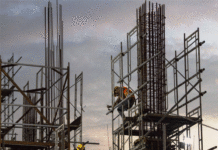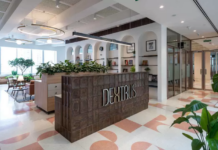New Delhi, October 04, 2017: Situated in the southern belt of Bangalore, Kanakapura road is witnessing a renewed thrust in demand for upcoming projects and residences, with developments on a massive scale starting to make their presence even before the ongoing work on the metro rail began. What is prompting this sudden surge?
The metro offers the element of good connectivity to the CBD along with the presence of the NICE road, interlinking Hosur and Electronic city on one side and Mysore road on the other. Kanakapura road has thus become a nodal point connecting Electronic City, Silk Board, and outer ring road; where most of the software firms are. This connectivity promotes easy access to each of the respective junctures especially with the metro rail coming in, which permits equal speed of transit to the rest of the city.
These transport factors, combined with the availability of land at relatively affordable rates, and the serene environment in this area, has contributed to making Kanakapura road very attractive, and is precisely the reason why the area is influencing the kind of growth spurt in activity that is happening today.
About two decades back, there was very little commercial activity in this region, due to its lack of connectivity to the city, and especially due to the lack of industrial activity and the IT sector which dominates most of the other predominant regions in Bangalore. Kanakapura road was then home to a number of farmhouses, rehabilitation centres, not to mention the massive Art of Living ashram which has had its presence since the early eighties.
Because of the availability of land in the area and the lush greenery, people would build weekend getaway homes, thus molding Kanakapura road into an area where people chose to sit back and relax, be with nature and get in touch with their spiritual side. Now, with other popular areas of Bangalore becoming too crowded and expensive, and Kanakapura road offering quick and efficient public transport, and with the recent development of the metro, it has become a natural progression to move away from an unaffordable CDB to areas that are better priced and offer better living conditions.
The presence of a high water table and availability of land parcels also triggered growth on this road, with the NICE road also contributing as a redeemer for all commutability factors. The absence of industries has only made the area more attractive, as the serene green surroundings are left preserved making it more habitable. Above all these factors, the emergence of the metro rail has stepped up the pace of growth. Property prices in Kanakapura road will soon witness an increase in rates close to 15 to 20 per cent over the next two years.
The traditional fabric of the area also compliments the rest of South Bangalore, triggering demand. One of the major attractions of the south is that some of the leading colleges and schools are situated in this region. It is also home to some of the best hospitals and medical care. The entertainment segment is also making a mark in this region, with some of the best traditional restaurants, making it attractive especially for the traditional residents of the city.
There are however concerns about this sudden influx of activity in Kanakapura road, and the surrounding areas of south Bangalore causing a strain on existing infrastructure. Whitefield witnessed similar issues in infrastructure after the massive developments that happened in its region. Coupled with this, the metro lines do not run through all the roads of South Bangalore which means the last mile connectivity is not effectively addressed.
This calls for active intervention on the part of the government where infrastructure concerns such as water, sewage, electricity are effectively addressed and the issue of last mile connectivity for the metro is also solved so that Kanakapura road does not face the same strains that Whitefield currently faces. Development and progress cannot be stopped but development needs to happen in a systematic planned manner so that past mistakes of other areas are not repeated.
Corporate Comm India(CCI Newswire)




















